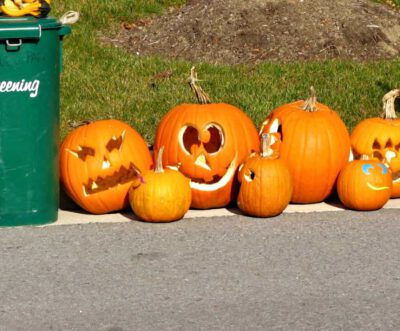
© Mk2010 (CC BY-SA 3.0)
This Halloween, around 18,000 tonnes of pumpkins will go to waste in the UK alone. That’s because, of the 30 million purchased each year, about half go entirely uneaten. That’s £27 million worth of edible food. The global costs will be far higher, once we add in the waste in the US and other countries where pumpkin carving is also a Halloween tradition.
The money spent on buying pumpkins is only a fraction of the true cost. When a pumpkin is wasted, the water, energy and labour used to grow and distribute it is also wasted.
For every kilo produced, around 260 grams of carbon dioxide equivalent greenhouse gases are emitted. Then when a pumpkin decomposes in a landfill it emits methane, which is a more potent greenhouse gas than carbon dioxide.
Growing pumpkins also requires plenty of water. When pumpkin leftovers are discarded, the freshwater used in their production is also wasted. The importance of freshwater reserves was well recognised in summer 2022 when much of the UK had hosepipe bans.
In a world where 2 billion people are malnourished, despite the fact that food systems could sustainably feed the total world population, and where families turn to food banks even in wealthy countries, wasting perfectly edible pumpkin is immoral.
Despite all this, we can still make a difference this Halloween. As an academic expert in circular food supply chains, I know how important it is to avoid wasted food, and I have studied how to ensure leftover food is put to use. So I know that people can eliminate these negative impacts of pumpkin waste by simply using leftover pumpkins. Here are the three practical methods.
. Assistant Professor in Circular Supply Chains, University of Bradford








